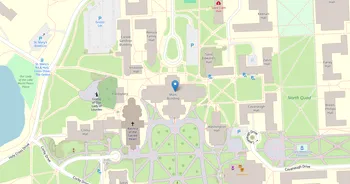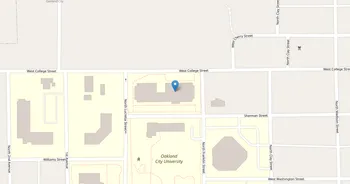Martin University : Overview, Courses, Scholarships & Rankings
About Martin University
Martin University is often cited as Indiana's only Predominantly Black Institution, with roots in serving adult learners and first-generation students. Academics emphasize a liberal-arts foundation woven with career-ready study in community-minded fields. Courses lean practical, supported by advising, tutoring, and a writing center. The campus offers a welcoming library, computer labs, quiet study areas, and spots where commuters can land, connect, and recharge between classes.
Student life skews purposeful and close-knit. You'll find service projects, cultural events, and student organizations that build leadership while keeping schedules workable. On down time, students tap into nearby parks, rec centers, and city trails for a breather. Career preparation shows up in internships around Indianapolis, employer meetups, and guidance that ties coursework to local need. The culture favors persistence, respect, and community pride, with celebrations that bring families into the fold. It feels sincere, and it sticks with you.
Key Institutional Details
Contact & Profile
Academic & Institutional
Academic Programs & Fields of Study
Martin University offers 11 degree programs across 5 major academic fields, graduating approximately 44 students annually. The most popular fields by graduate volume are Psychology (3 programs, 18 graduates), Business (4 programs, 13 graduates), Education (2 programs, 5 graduates), Liberal Arts (1 programs, 5 graduates) and Security & Safety (1 programs, 3 graduates). Explore program details, award levels, and graduate demographics below.
Psychology (3 programs, 18 graduates)
Psychological Sciences, Mental Health and Behavioral Studies
| Program Name | Graduates | Gender Distribution | Award Levels | CIP Code |
|---|---|---|---|---|
| Community Psychology | 10 |
|
Master's
|
42.2802 |
| General Psychology | 7 |
|
Bachelor's
|
42.0101 |
| Counseling Psychology | 1 |
|
Postbac Cert.
|
42.2803 |
Business (4 programs, 13 graduates)
Business Administration, Marketing and Entrepreneurship
| Program Name | Graduates | Gender Distribution | Award Levels | CIP Code |
|---|---|---|---|---|
| Business Administration and Management | 7 |
|
Bachelor's
|
52.0201 |
| Organizational Leadership | 4 |
|
Master's
|
52.0213 |
| Business Administration and Management | 1 |
|
Bachelor's
|
52.0299 |
| Small Business Management | 1 |
|
Bachelor's
|
52.0703 |
Education (2 programs, 5 graduates)
Educational Sciences, Teaching Methods and Pedagogy
| Program Name | Graduates | Gender Distribution | Award Levels | CIP Code |
|---|---|---|---|---|
| General Education | 3 |
|
Bachelor's
|
13.0101 |
| Early Childhood Education | 2 |
|
Bachelor's
|
13.1210 |
Liberal Arts (1 programs, 5 graduates)
Liberal Arts Education, General Studies and Humanities
| Program Name | Graduates | Gender Distribution | Award Levels | CIP Code |
|---|---|---|---|---|
| Liberal Arts and Sciences | 5 |
|
Bachelor's
|
24.0101 |
Security & Safety (1 programs, 3 graduates)
Emergency Management, Law Enforcement and Public Safety
| Program Name | Graduates | Gender Distribution | Award Levels | CIP Code |
|---|---|---|---|---|
| Criminal Justice and Safety Studies | 3 |
|
Bachelor's
|
43.0104 |
Tuition, Fees & Estimated Costs
Overview of tuition rates, housing, and other annual education expenses for undergraduate and graduate students
Financial Aid & Student Support
Summary of scholarships, grants, student loans, and financial aid statistics for undergraduate students
Student Success Metrics
Graduation rates and post-graduation earnings to help assess student outcomes and long-term value of education.
Loan Burden & Repayment Outcomes
Breakdown of loan repayment rates and student debt levels by income and dependency status.
Frequently Asked Questions
Find answers to the most common questions about Martin University
How much does it cost to attend Martin University?
The annual tuition at Martin University is $12,830 for in-state students. When including room and board, books, and other expenses, the total estimated cost is approximately $13,480 for in-state students. Additional costs include room and board $8,140 (off-campus) and books and supplies $650.
Data based on IPEDS program completions for 2022-2023 academic year. Tuition and cost estimates are approximate and may not include all fees, personal expenses, or transportation costs.
What academic programs and degree levels does Martin University offer?
Martin University offers 11 academic programs across 5 major fields of study, with available degree levels: Bachelor's, Postbac Cert., Master's.
Most popular program areas include:
- Psychological Sciences, Mental Health and Behavioral Studies (3 programs)
- Business Administration, Marketing and Entrepreneurship (4 programs)
- Educational Sciences, Teaching Methods and Pedagogy (2 programs)
- Liberal Arts Education, General Studies and Humanities (1 programs)
- Emergency Management, Law Enforcement and Public Safety (1 programs)
Data based on IPEDS program completions for 2023-2024 academic year. Numbers reflect programs where students graduated, not all offered programs.
What financial aid and scholarships are available at Martin University?
Martin University provides financial aid to 2% of first-time, full-time students, with average grants of $11,195 and average loans of $9,402.
Average financial aid amounts by type:
- Pell grants: $6,473
- State/Local grants: $6,973
- Federal loans: $9,402
The university supports 3 students with grants and 2 students with loans annually.
Data based on IPEDS for 2022-2023 academic year. Financial aid amounts and percentages may vary by program, enrollment status, and individual circumstances.
What is the average salary for Martin University graduates?
Martin University graduates earn a median salary of $25,539 after 6 years and $22,544 after 10 years.
The salary range 10 years after graduation spans from $10,062 (25th percentile) to $39,790 (75th percentile), with top earners reaching $49,700 (90th percentile).
Data based on IPEDS for 2022-2023 academic year. Salary data reflects graduates who received federal financial aid (approximately 60% of all graduates). Actual earnings may vary significantly based on program, location, and individual circumstances.
Related Universities




Found something useful? Help others discover it too! Share with friends, on social media, or save for later - every share helps someone find the information they need.